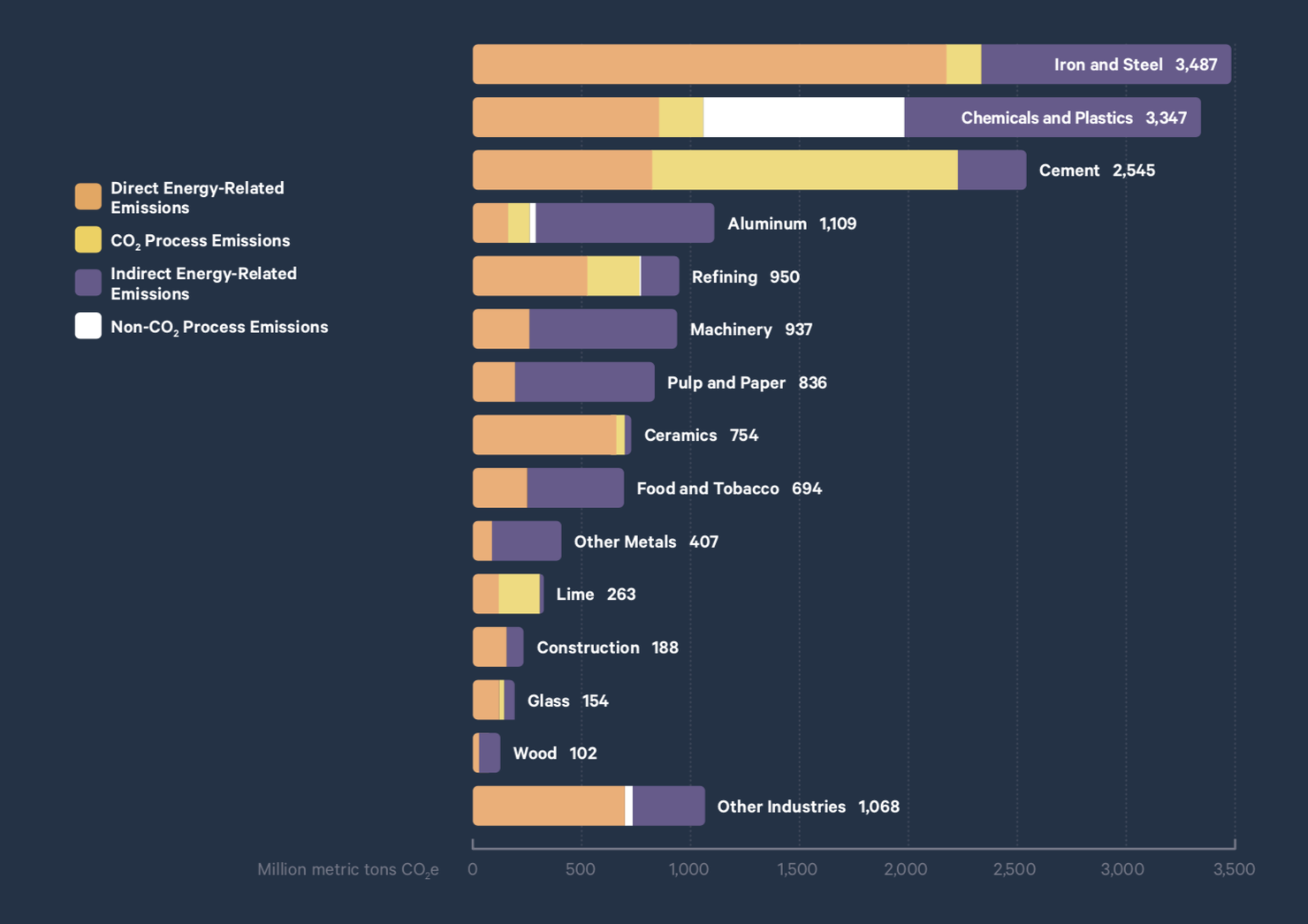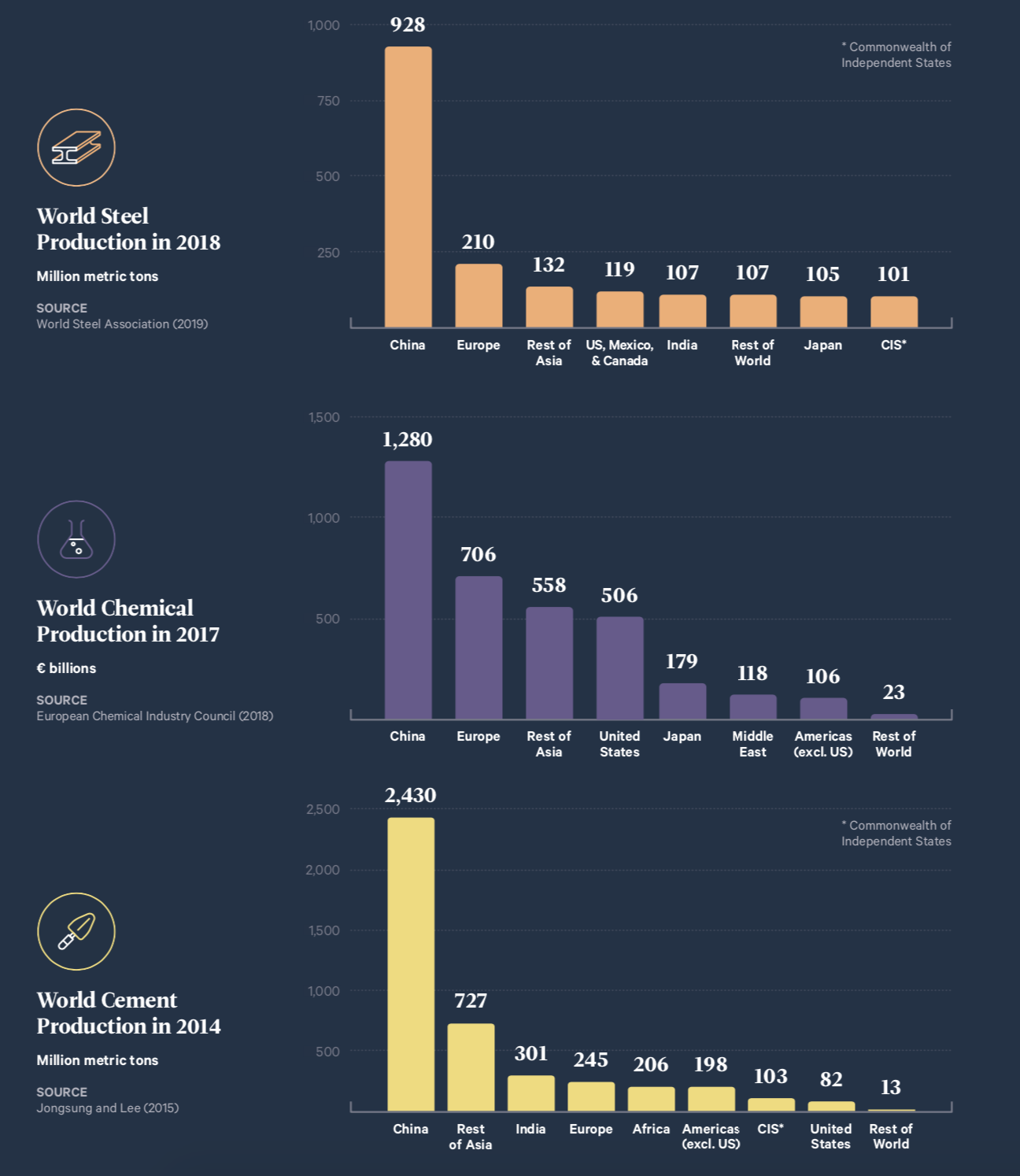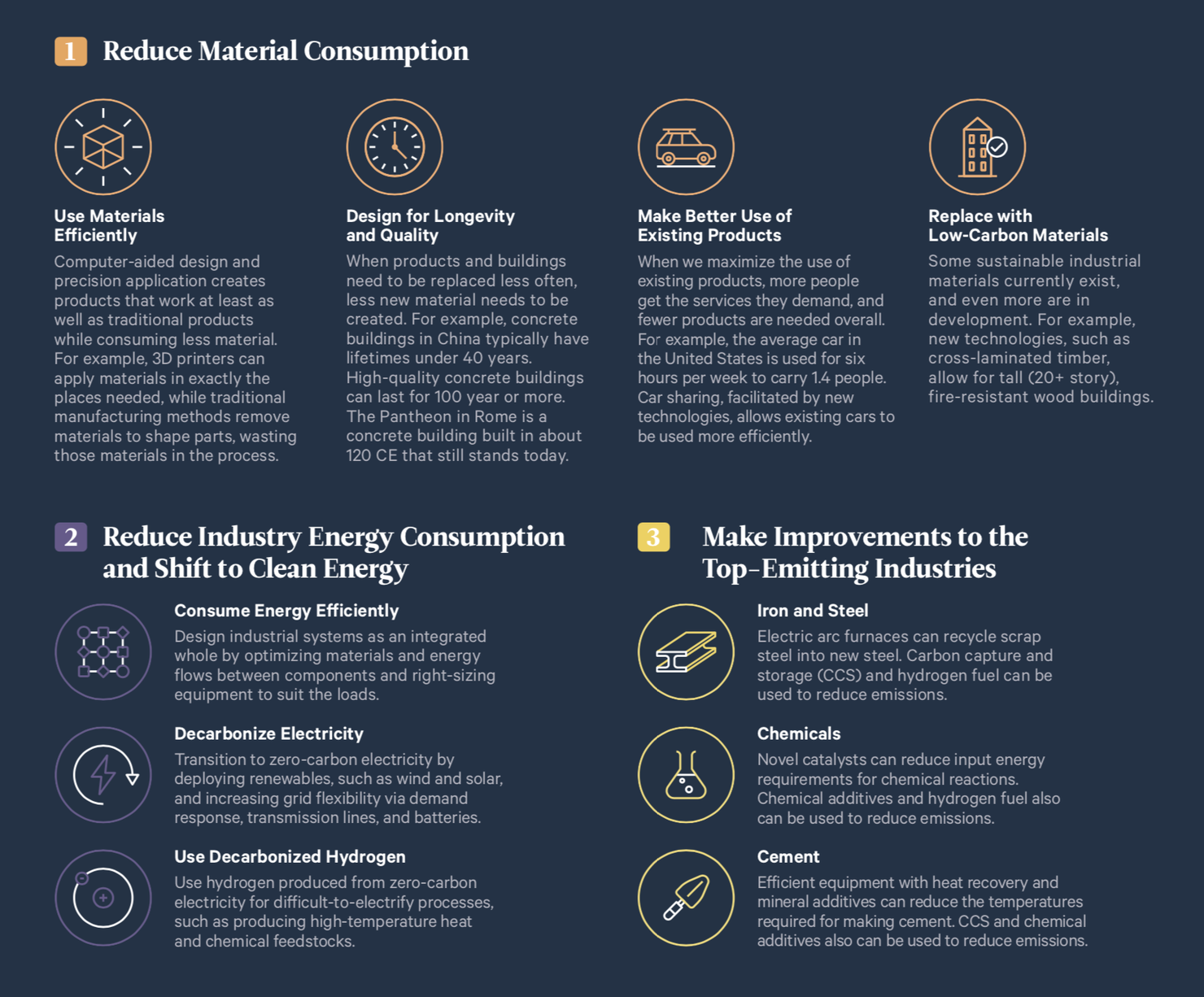Research: Jeffrey Rissman, Chris Bataille, Eric Masanet, Nate Aden, William R. Morrow III, Nan Zhou, Neal Elliott, Rebecca Dell, Niko Heeren, Brigitta Huckestein, Joe Cresko, Sabbie A. Miller, Joyashree Roy, Paul Fennel, Betty Cremmins, Thomas Koch Blank, David Hone, Ellen D. Williams, Stephane de la Rue du Can, Bill Sisson, Mike Williams, John Katzenberger, Dallas Burtraw, Girish Sethi, He Ping, David Danielson, Hongyou Lu, Tom Lorber, Jens Dinkel, and Jonas Helseth
Infographic: Ellie Macchi Barber
Adapted infographic: James Round

The industrial sector—comprising all manufacturing activities, petroleum refining, and construction across the globe—is vast. From cement to ceramics, chemicals to construction, the sector is also incredibly diverse. Industry is responsible for a third of all global greenhouse emissions, so reducing its carbon footprint is essential for climate mitigation; however, the sheer complexity of global industry makes decarbonization efforts particularly vexing.
Solutions to reduce emissions for iron production and steelmaking might not translate for paper manufacturing, for example. And a far-reaching clean energy agenda in the United States may not even impact global industry emissions, if China or Europe fails to adopt similar reforms.

Recently, Dallas Burtraw, the Darius Gaskins Senior Fellow at RFF, coauthored a related journal article alongside some 29 other researchers that assesses how the world can achieve net-zero industrial emissions by 2070. Despite the heterogeneity of the sector, the authors point out that the top three industries—iron and steel, chemicals and plastics, and cement—account for over 55 percent of global industry emissions. Homing in on the biggest polluters within these industries could have sizable impacts on the entire industrial sector’s emissions and the emissions trajectory of the world.
Burtraw and his coauthors also offer solutions relevant to a range of industries. Across the board, industry should design longer-lasting, lower-carbon materials and make their processes more efficient. But they cannot act alone; policymakers across the world should support research and development to discover new innovations, implement carbon pricing, and incentivize a transition to zero-carbon energy.
Most importantly, there will be no one-size-fits-all approach to decarbonizing industry. A variety of reforms, across countries and industries, will be crucial. Achieving net-zero emissions by 2070 will be a challenge, but a clear—if narrow—path forward is available. Necessary investments primarily will come from the private sector, but business cannot act until the policy landscape is more certain. Policymakers and businesses just need to commit.
Industry is Responsible for One-Third of Global Greenhouse Gas Emissions

Each sector’s wedge includes emissions associated with electricity and heat purchased by that sector
Global Greenhouse Gas Emissions by Industry in 2014

“Industry” includes all manufacturing activities, petroleum refining, and construction. It does not include extraction of raw materials (e.g., mining, drilling, forestry), agriculture, waste management (e.g., water treatment, landfills), nor fugitive emissions. Nor does it include emissions from transporting input materials or output products (as those are part of the “transportation” sector)
Where Does Production Occur?

Three Main Strategies Can Reduce Industry Emissions

Policies to Help Accelerate the Transition to Zero-Carbon Energy









